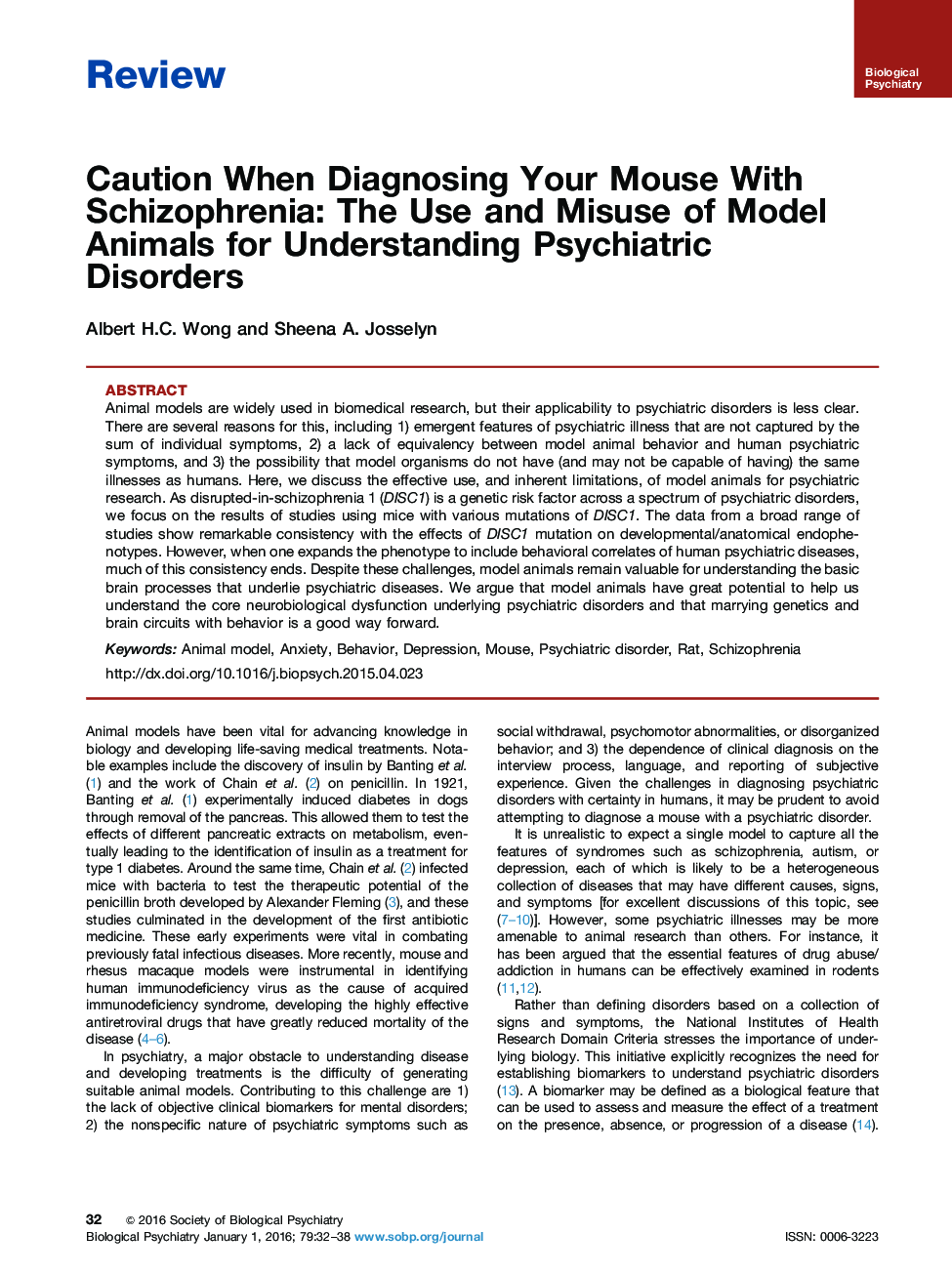| کد مقاله | کد نشریه | سال انتشار | مقاله انگلیسی | نسخه تمام متن |
|---|---|---|---|---|
| 4177104 | 1276389 | 2016 | 7 صفحه PDF | دانلود رایگان |
Animal models are widely used in biomedical research, but their applicability to psychiatric disorders is less clear. There are several reasons for this, including 1) emergent features of psychiatric illness that are not captured by the sum of individual symptoms, 2) a lack of equivalency between model animal behavior and human psychiatric symptoms, and 3) the possibility that model organisms do not have (and may not be capable of having) the same illnesses as humans. Here, we discuss the effective use, and inherent limitations, of model animals for psychiatric research. As disrupted-in-schizophrenia 1 (DISC1) is a genetic risk factor across a spectrum of psychiatric disorders, we focus on the results of studies using mice with various mutations of DISC1. The data from a broad range of studies show remarkable consistency with the effects of DISC1 mutation on developmental/anatomical endophenotypes. However, when one expands the phenotype to include behavioral correlates of human psychiatric diseases, much of this consistency ends. Despite these challenges, model animals remain valuable for understanding the basic brain processes that underlie psychiatric diseases. We argue that model animals have great potential to help us understand the core neurobiological dysfunction underlying psychiatric disorders and that marrying genetics and brain circuits with behavior is a good way forward.
Journal: Biological Psychiatry - Volume 79, Issue 1, 1 January 2016, Pages 32–38
